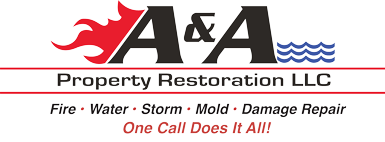7 SURPRISING FACTS ABOUT MOLD REMEDIATION PROJECTS
Mold remediation is the process of tracking down all the mold present, removing it safely, and making sure that it cannot return. This is a complex process with serious legal requirements behind it – but many homeowners aren’t sure how it works or what to expect. Here are several facts about remediation projects that often catch homeowners and businesses off guard when they first hear about them. Don’t let remediation surprise you!
Timing is Important:If remediation is required, it needs to be started quickly (inspections and tests will confirm if full remediation is necessary). Serious mold damage will grow worse if not found and removed – that means more lasting damage to your home, and more serious health hazards as well. Sooner is always better.
Simply Spraying Down Mold Isn’t Enough: Many people assume remediation is the same as simply spraying mold with bleach or other chemicals – not so. Spraying mold with chemicals does very little in serious situations. Remediation is the careful process of finding, isolating and removing mold: It generally takes quite a few tools, protective measures…and trashbags. Don’t expect the process to be over in an afternoon.
Porous Materials Usually Don’t Survive: Mold digs deep in porous materials, particularly fabric, wood, and sometimes even plaster or concrete. Any piece infested must go – and that includes structural beams in your house.
A Lot of the Work is About Recurrence: Even dead mold or a few mold cells in the air can start the problem all over again. Remediation works very hard to limit the spread of mold cells to make sure that the problem is over, permanently. Many times areas are sealed off and carefully vacuumed to help ensure that the rest of the building is protected.
The Type of Mold Matters: Several different kinds of mold can infect buildings, and some are more common than others. Only a couple – notably stachybotrus or black mold – are particularly dangerous for humans, but all mold has been associated with a variety of health problems…not to mention the physical damage mold does.
Remediation Requires Certification: Always look for a contractor that is certified to conduct mold remediation – preferably one that has worked with strict government or insurance regulations before. Experience is important, but keeping up with remediation standards and practices is vital.
Most Mold is Hidden: If you see a little bit of mold, you may think that the remediation process is simple or even not necessary. Unfortunately, the mold visible to humans is often only part of the problem – mold likes wet, dark places, and can grow for years inside walls or crawlspaces without ever being seen.
A & A Property Restoration LLC
LET US HELP
Proudly Serving the Twin Cities Metro Area
Search Posts
Recent Posts
- WHERE TO FIND HIDDEN DAMAGE AFTER A FIRE July 24, 2017
- SUMMER STORMS AND EMERGENCIES July 10, 2017
- HOW TO PROTECT YOUR HOME IF YOU LIVE IN A FLOOD ZONE June 26, 2017
- HOW LONG IS TOO LONG? DEALING WITH WATER DAMAGE June 12, 2017
- FIRE DAMAGE: WHAT TO EXPECT IN THE FIRST 48 HOURS May 22, 2017
Categories
Subscribe!
Thanks for subscribing! Please check your email for further instructions.
